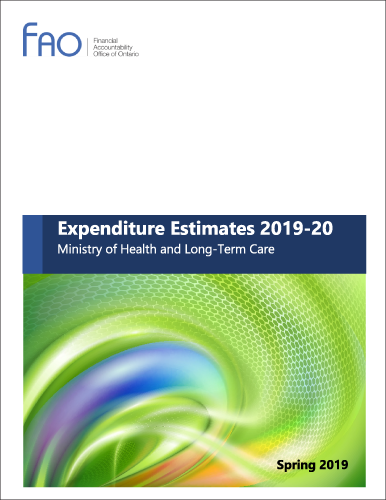The online version of the report will be published soon.
Expenditure Estimates 2019-20: Ministry of Health and Long-Term Care

About this Document
Established by the Financial Accountability Officer Act, 2013, the Financial Accountability Office of Ontario (FAO) provides independent analysis on the state of the Province’s finances, trends in the provincial economy and related matters important to the Legislative Assembly of Ontario.
The FAO produces independent analysis on the initiative of the Financial Accountability Officer. Upon request from a member or committee of the Assembly, the Officer may also direct the FAO to undertake research to estimate the financial costs or financial benefits to the Province of any bill or proposal under the jurisdiction of the legislature.
This report was prepared on the initiative of the Financial Accountability Officer. In keeping with the FAO’s mandate to provide the Legislative Assembly of Ontario with independent economic and financial analysis, this report makes no policy recommendations.
This analysis was prepared by Matt Gurnham and Matthew Stephenson, under the direction of Jeffrey Novak, with contributions from Luan Ngo and Edward Crummey.
External reviewers provided comments on early drafts of the report. The assistance of external reviewers implies no responsibility for the final product, which rests solely with the FAO.
© Queen’s Printer for Ontario, 2019

